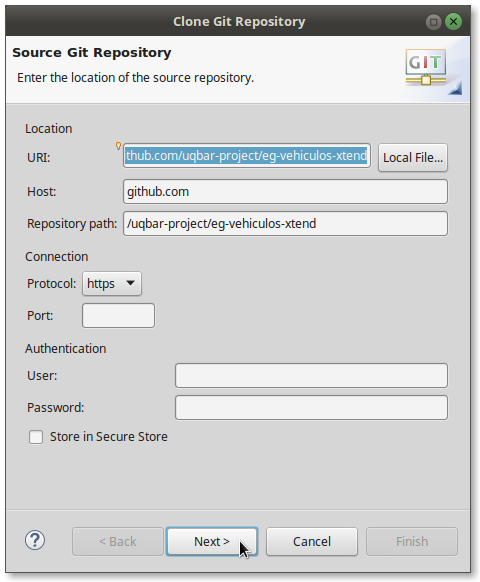

They were never committed, so Git can’t help us recover them later. Keep in mind: any changes you “undo” this way are really gone. You could provide a branch name or specific SHA you want to go back to or, by default, Git will assume you want to checkout HEAD, the last commit on the currently-checked-out branch. What’s happening: git checkout alters files in the working directory to a state previously known to Git. You want to undo everything in that file-just go back to the way it looked in the last commit. You haven’t committed those changes, though. Scenario: The cat walked across the keyboard and somehow saved the changes, then crashed the editor. With nothing currently staged, this just rewrites the previous commit message.
#Smartgit checkout branch update#
What’s happening: git commit -amend will update and replace the most recent commit with a new commit that combines any staged changes with the contents of the previous commit.

Undo with: git commit -amend or git commit -amend -m "Fixes bug #42"

Scenario: You just typo’d the last commit message, you did git commit -m "Fxies bug #42" but before git push you realized that really should say “Fixes bug #42”. This is Git’s safest, most basic “undo” scenario, because it doesn’t alter history-so you can now git push the new “inverse” commit to undo your mistaken commit. If the old commit is “matter”, the new commit is “anti-matter”-anything removed in the old commit will be added in the new commit and anything added in the old commit will be removed in the new commit. What’s happening: git revert will create a new commit that’s the opposite (or inverse) of the given SHA. Scenario: You just ran git push, sending your changes to GitHub, now you realize there’s a problem with one of those commits. In this post, I’m going to take a look at some common scenarios where you might want to “undo” a change you’ve made and the best way to do it using Git. When you make a new commit, Git stores a snapshot of your repository at that specific moment in time later, you can use Git to go back to an earlier version of your project. In Git, “undo” can mean many slightly different things. One of the most useful features of any version control system is the ability to “undo” your mistakes.


 0 kommentar(er)
0 kommentar(er)
